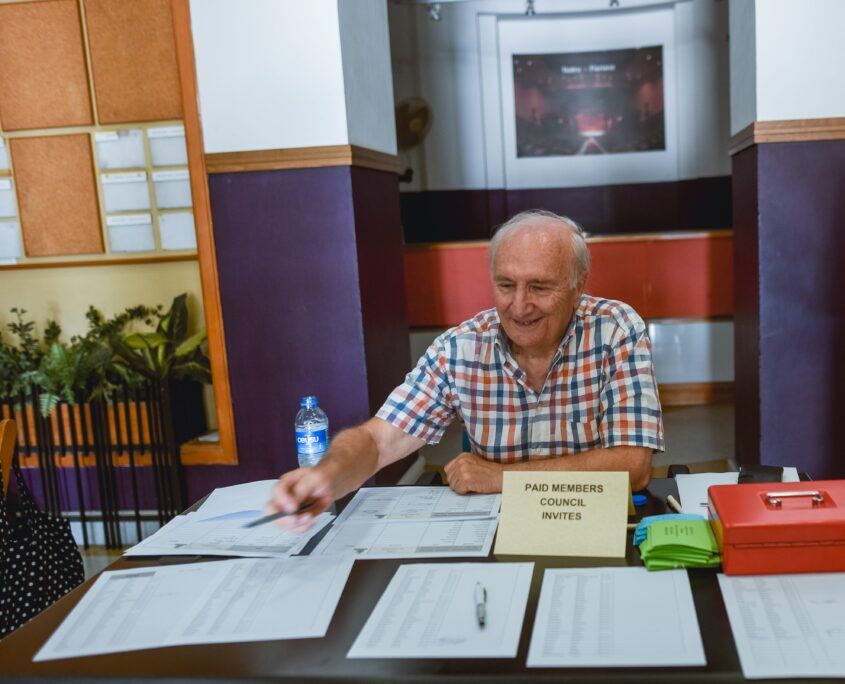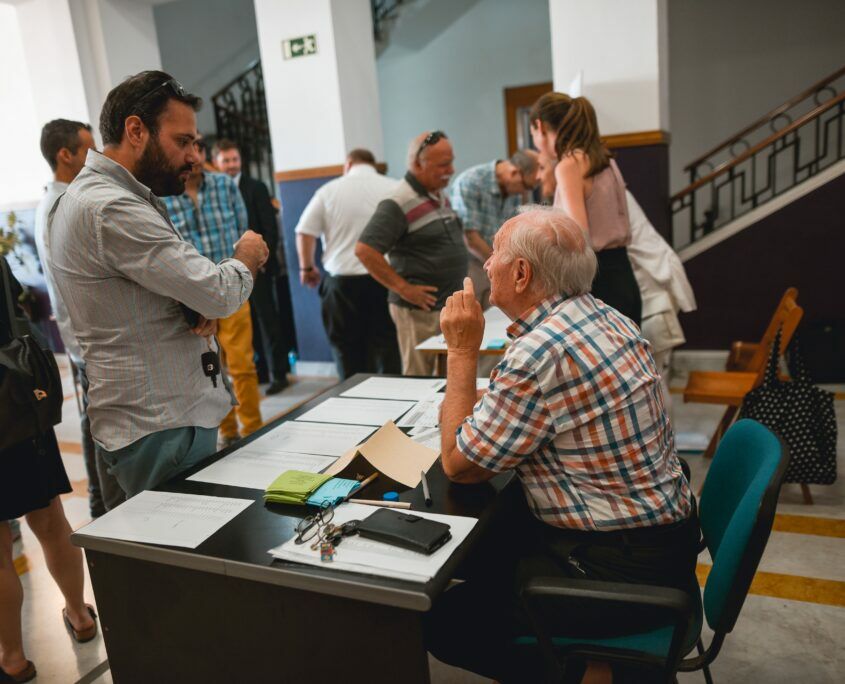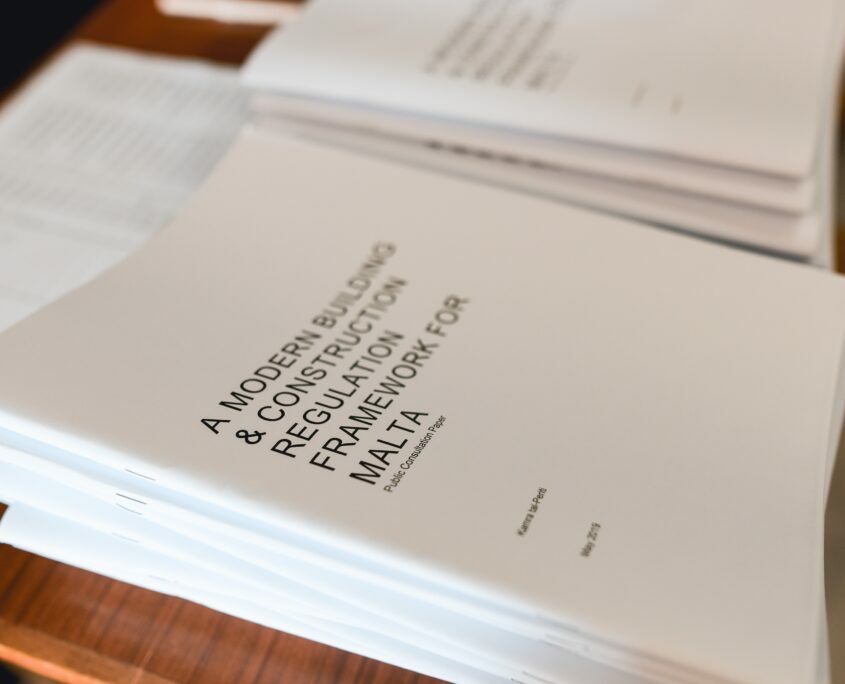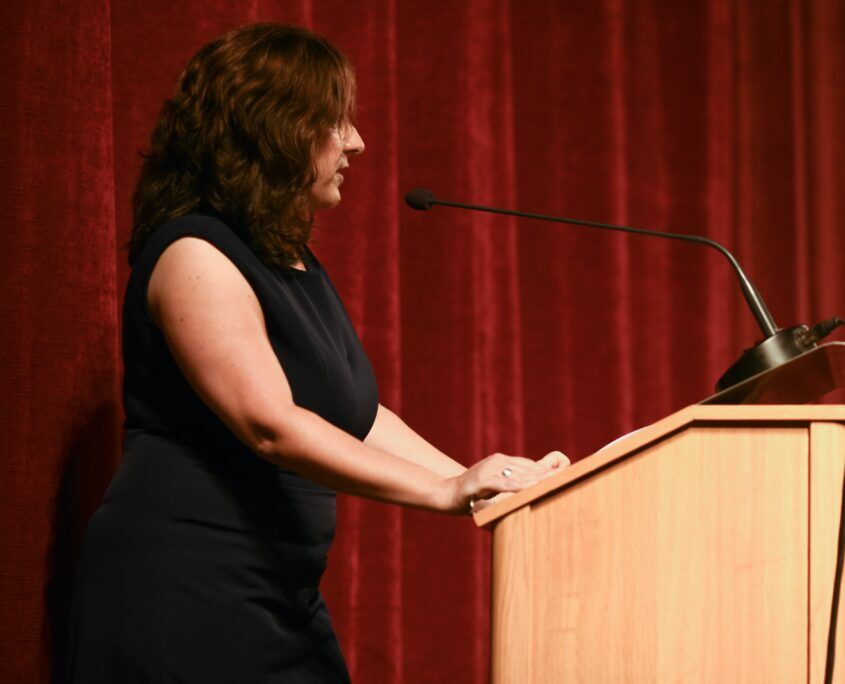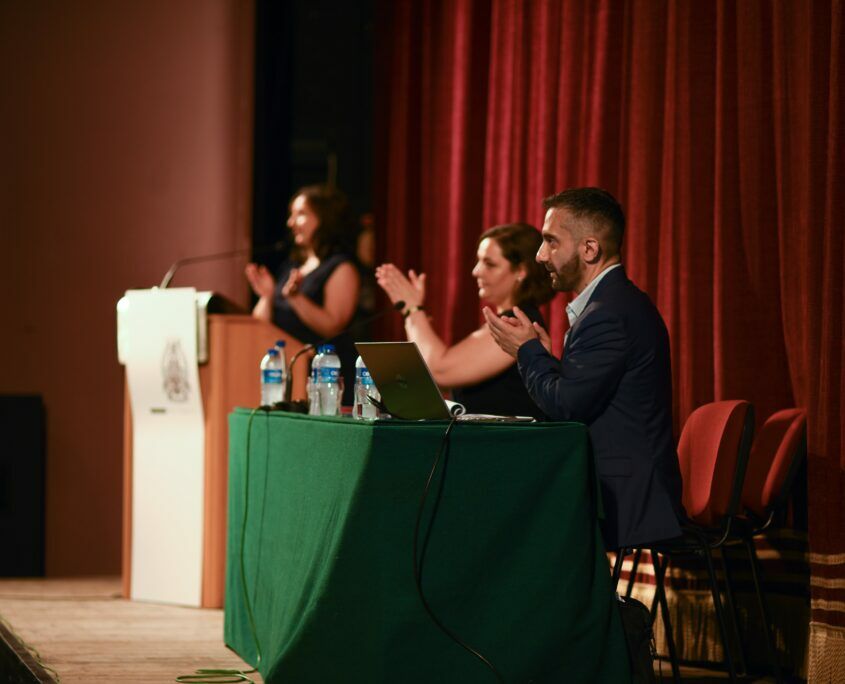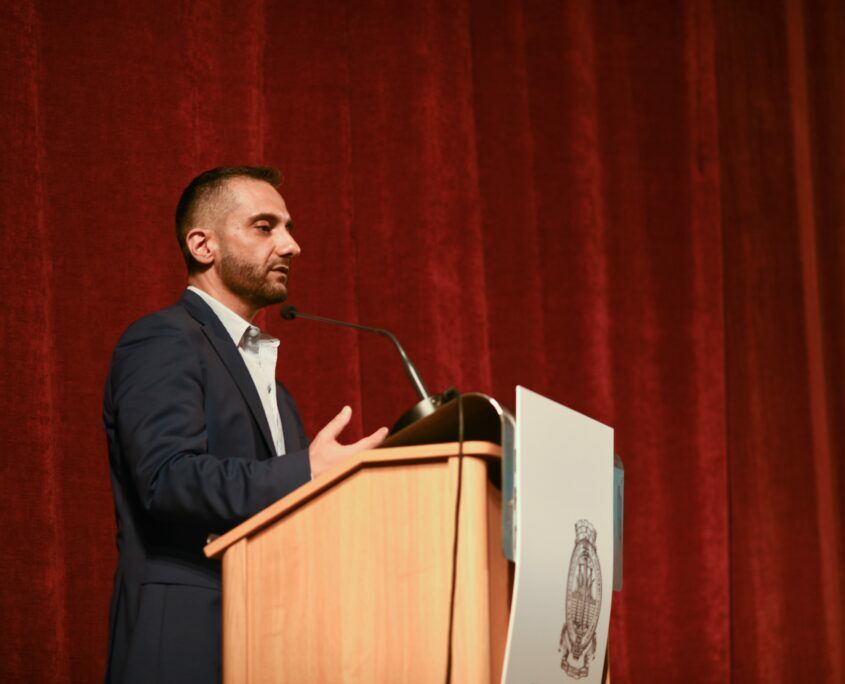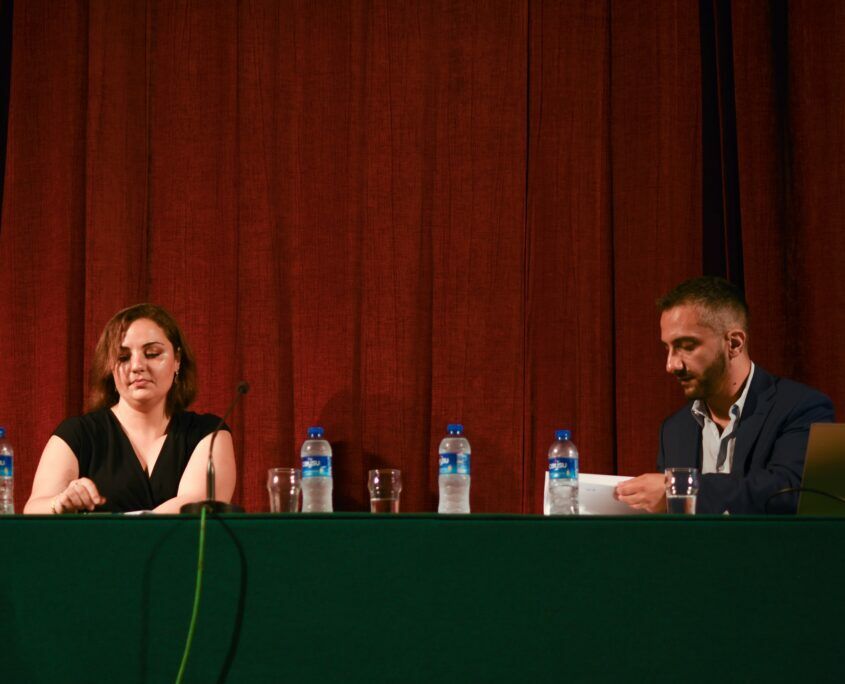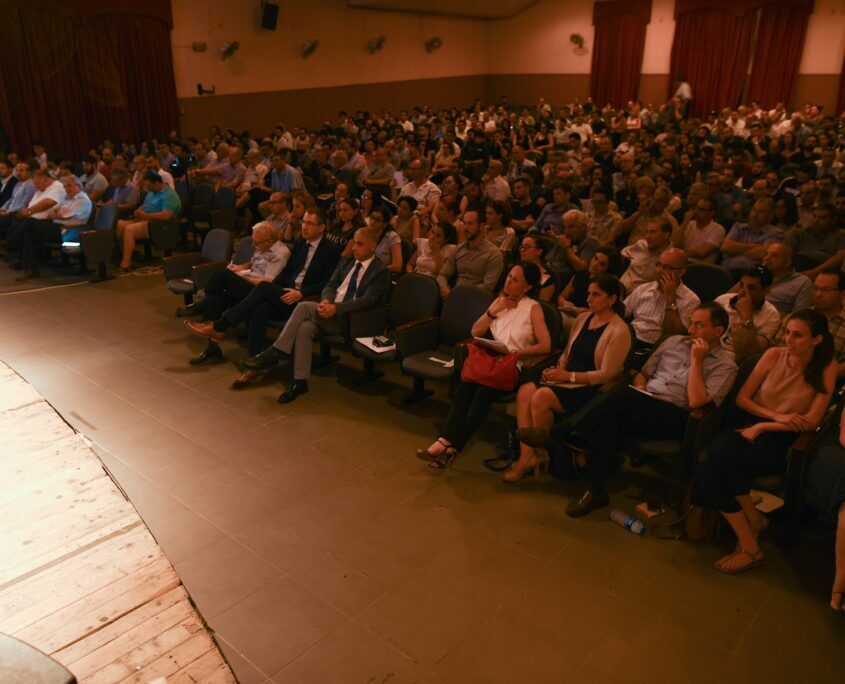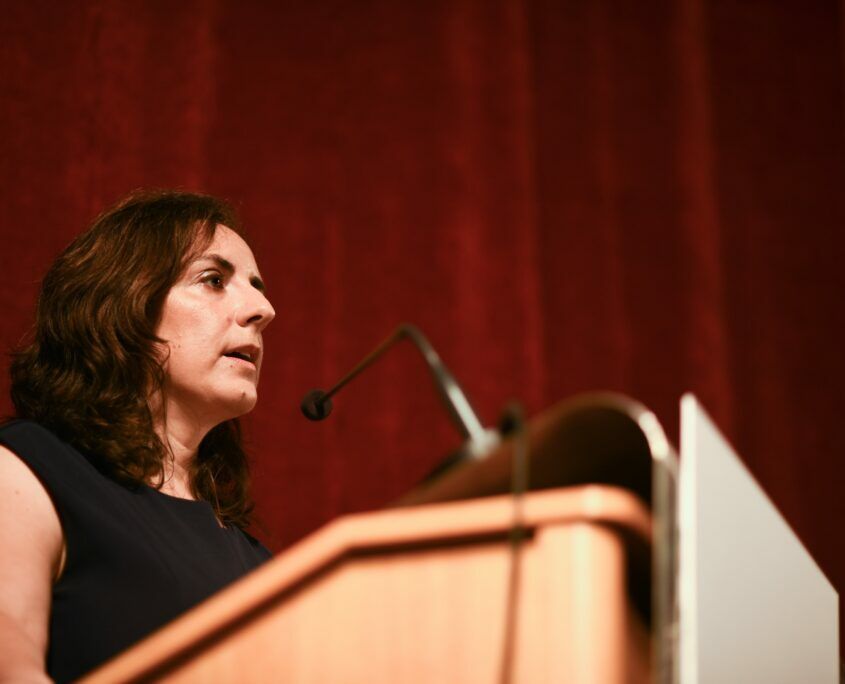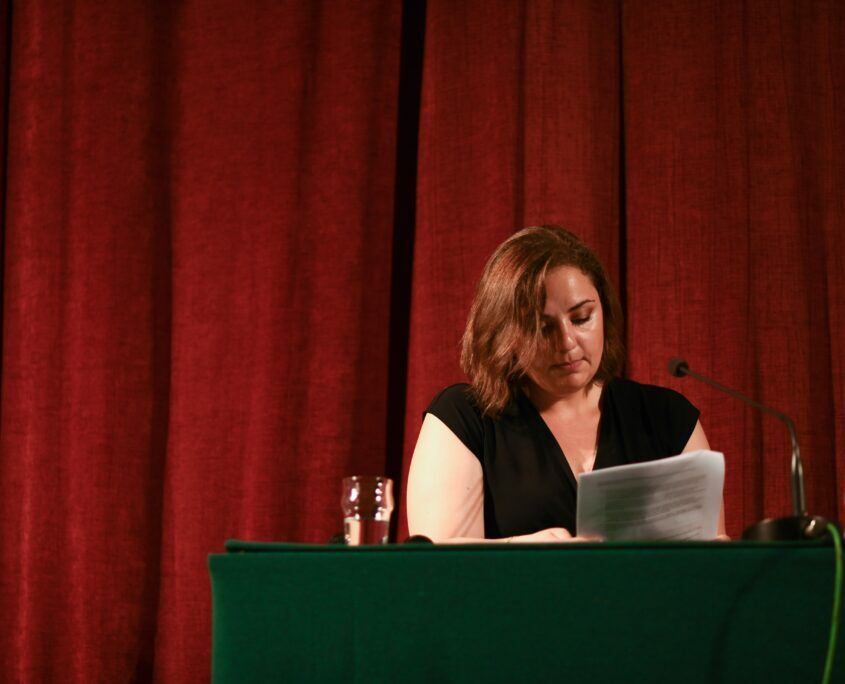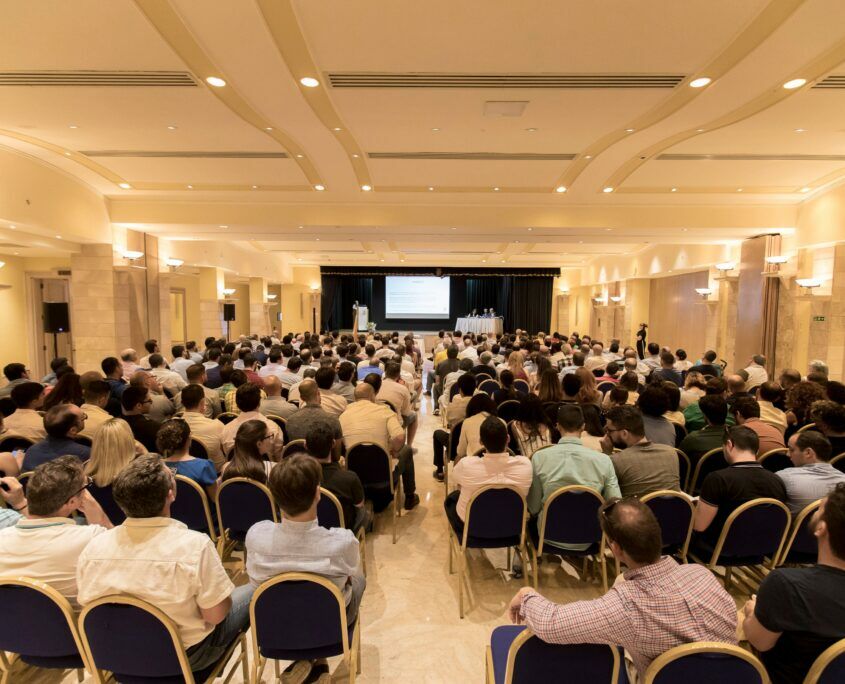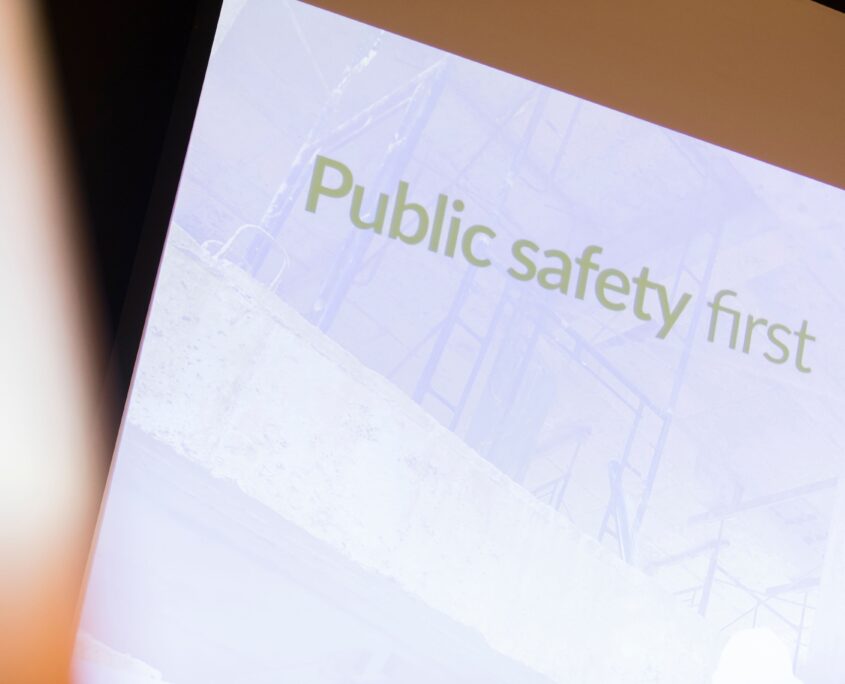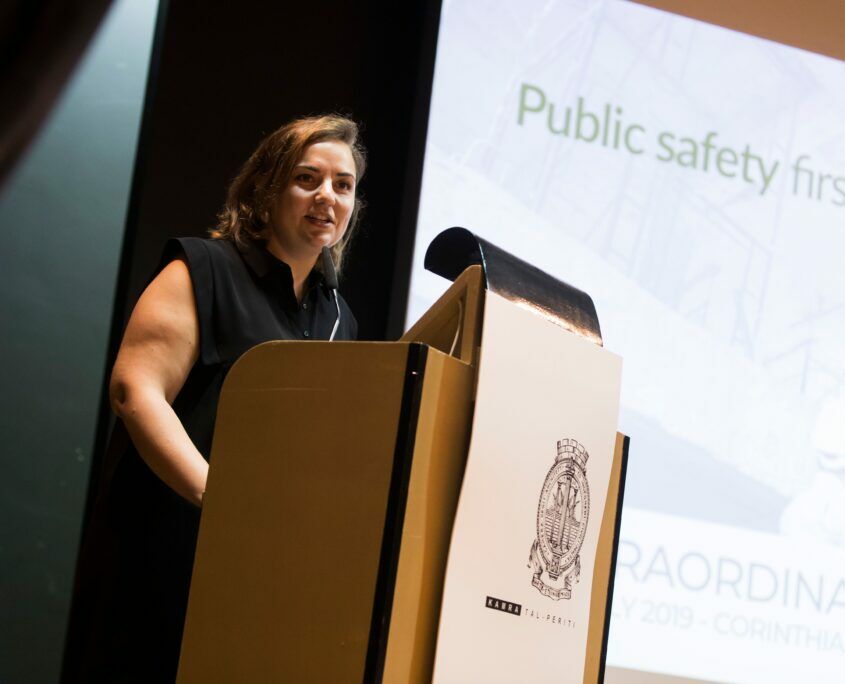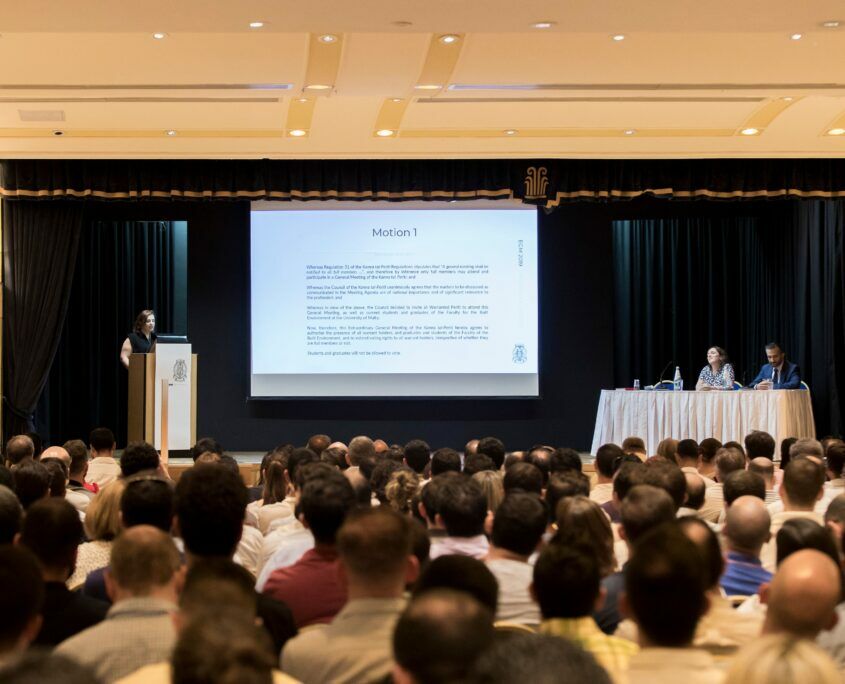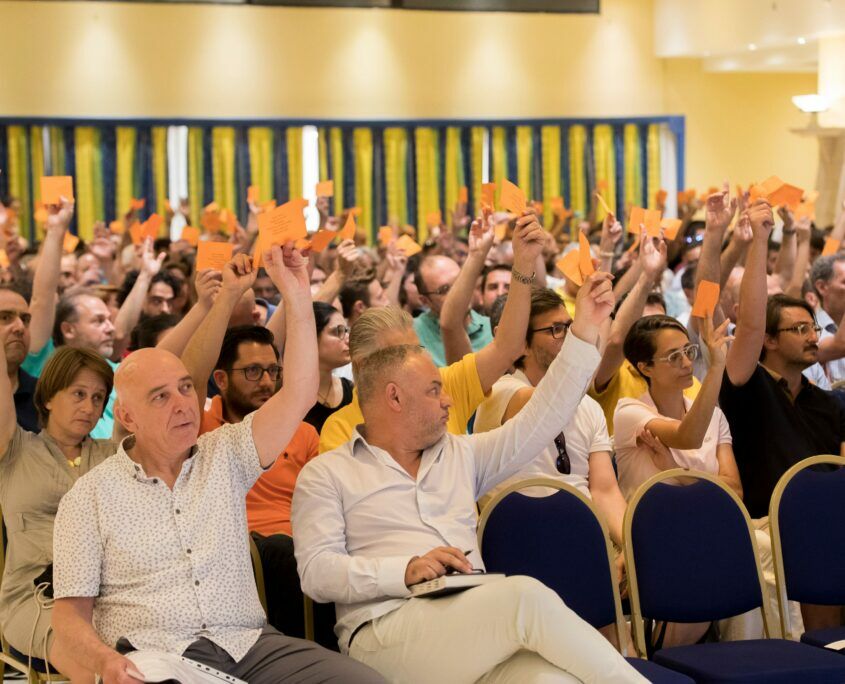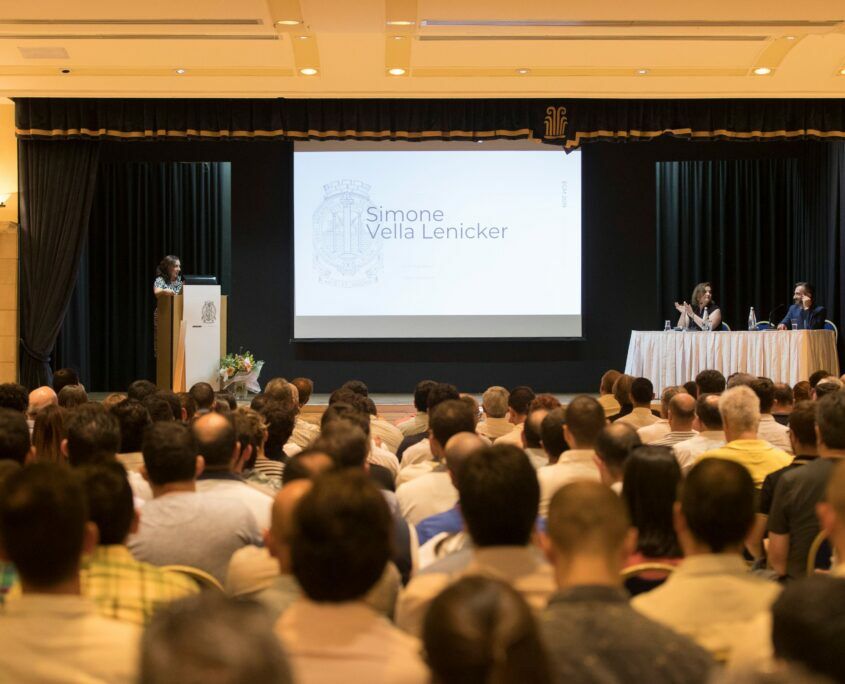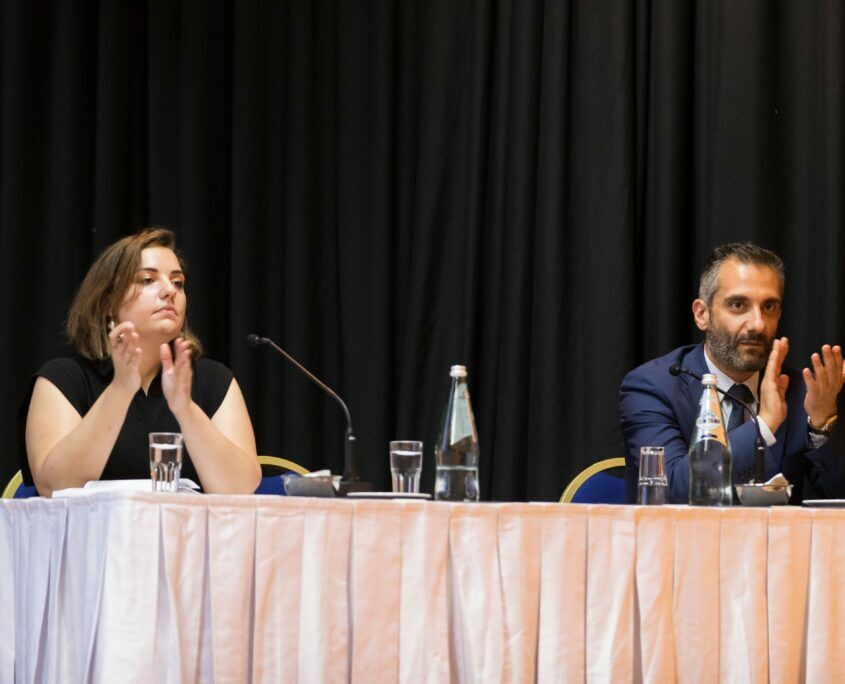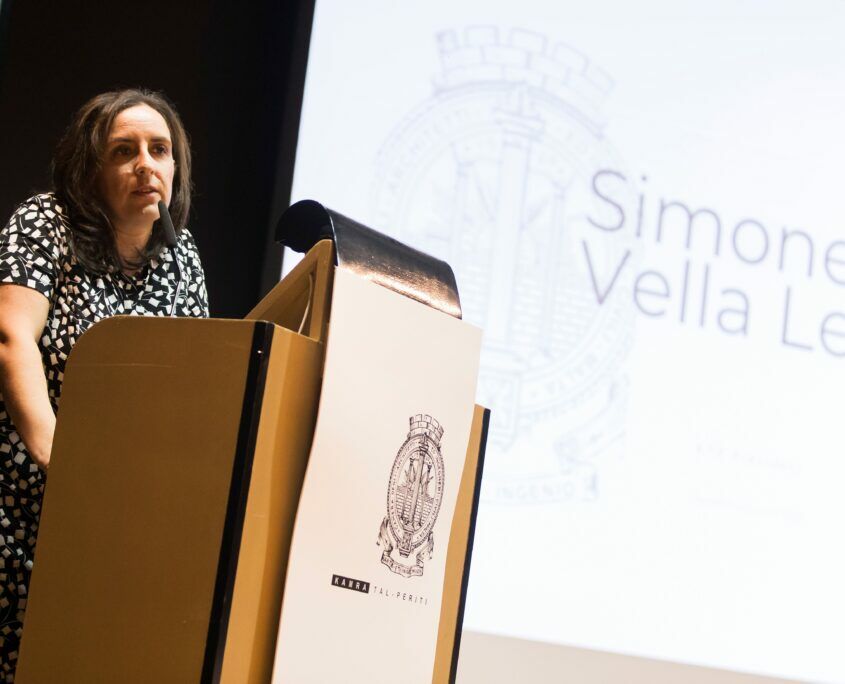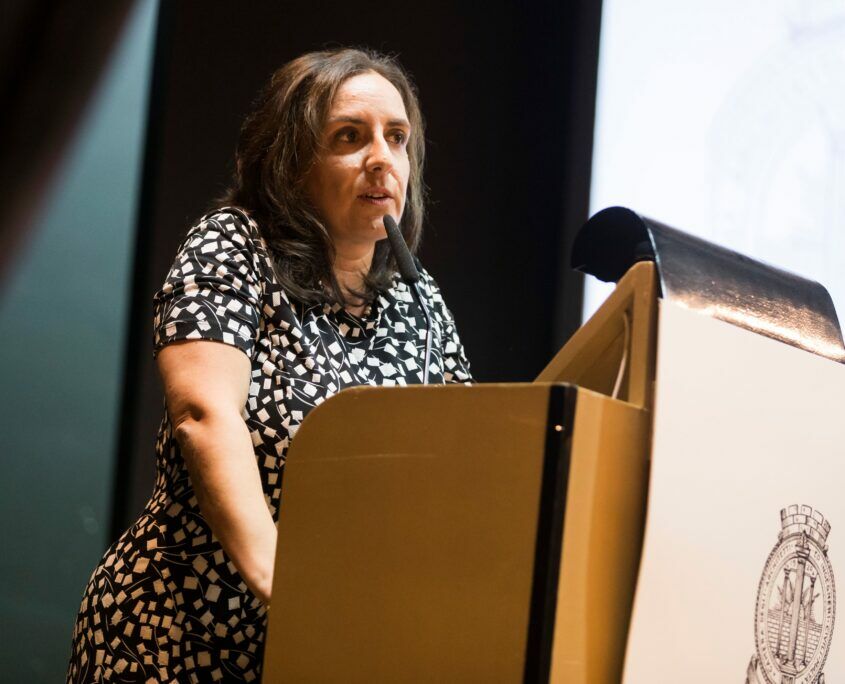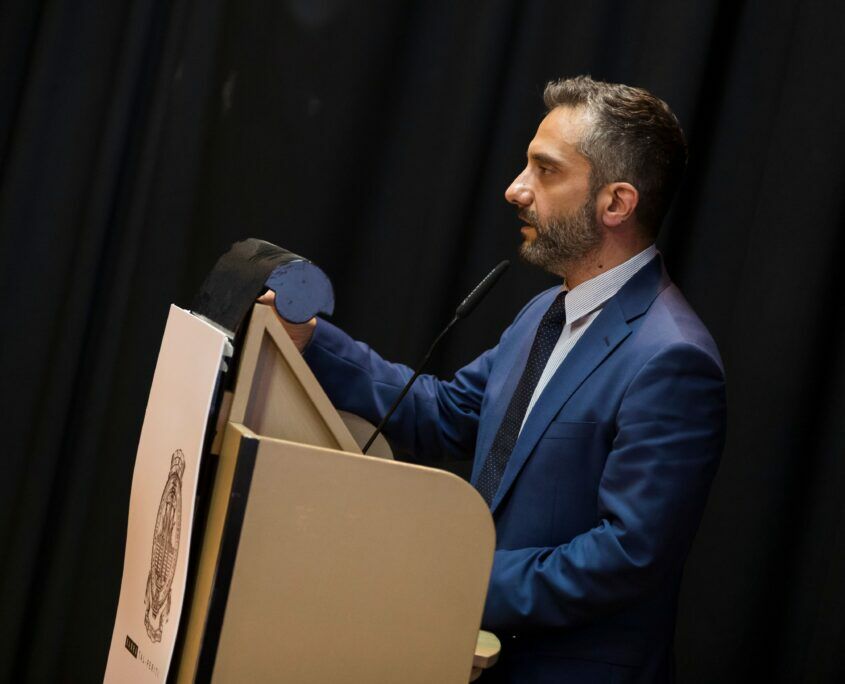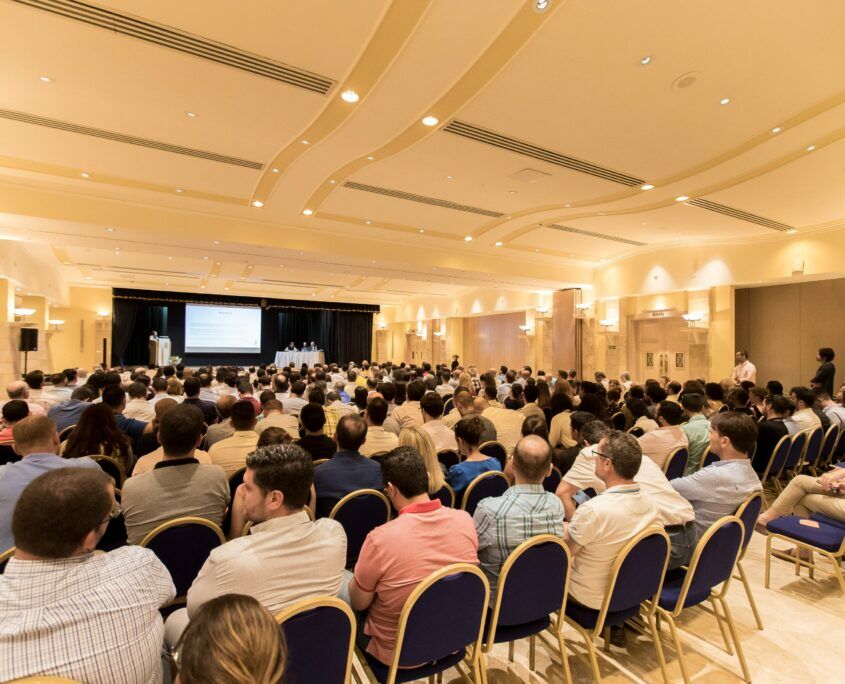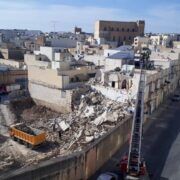CIR 11/19 | Building the Future – Towards a Renewed Profession
Dear Colleagues,
Those of you who were present at the Annual General Meeting of December 2007 will remember the slogan adopted at the time: Building the Future – Moving Towards a Renewed Profession. The Council at the time had presented a long term vision, which was approved by the profession at the same AGM. You may refresh your memory by reading the Kamra’s proposals for an overhaul of the profession, and its seminal publication “The Urban Challenge – Our Quality of Life and the Built Environment” which outlined the Kamra’s vision to address the various challenges faced by the country at the time and which, sadly, have only worsened since.
Over these twelve years, the Kamra has been consistent in its approach and has worked hard to achieve the goals set in 2007, lobbying incessantly with successive governments to deliver its vision.
The events of the past few months have highlighted what the Kamra termed as a crisis in the building industry, and further reinforced the fact that the failure to address the challenges it highlighted in 2007 had led to a situation which had become untenable.
The publication of Legal Notice 136 of 2019 on the Avoidance of Damage to Third Party Property caused an upheaval in the industry, not only because it was introduced without a proper consultation process and came into force immediately without adequate time for the industry to adjust, but more so because it failed to address the core issues that plague the industry and to address successive governments’ failure to regulate.
The Kamra kept the members of the profession, as well as the general public, updated on a regular basis over the past weeks through, among others, the following means:
- Two Extraordinary General Meetings held on the 21st June 2019 and the 5th July 2019;
- Five Circulars providing detailed information on the interpretation of the Legal Notice, the forms and procedures established by the Building Regulation Office (BRO) in response to the Legal Notice, and advice on how to address various site conditions in light of the requirements of the Legal Notice;
- Various press releases aimed at both the profession and the general public, to explain the Council’s position as events unfolded; and
- Through its social media platforms, primarily the Kamra tal-Periti Facebook page, and the Kamra tal-Periti Twitter account.
The following is a detailed resumé of the requests made by the Extraordinary General Meetings held in June and July 2019, and the final outcomes on each point to date.
Follow up on the Extraordinary General Meeting of the 21st June 2019
Those of you who were present for the first EGM of the 21st June 2019 will remember that this was held on the last day of the public consultation period on the draft of the subsequently published Legal Notice 136 of 2019. There were a number of points which the profession unanimously agreed required to be addressed, and three overriding matters which the profession confirmed to be unacceptable. These concerned:
- the lines of responsibility between the owner / developer, the contractor and the perit in charge following the introduction of the figure of the Site Technical Officer and certain text in the draft which contradicted other legislation and historically established lines of responsibility;
- the reports and studies required to be submitted, which at the time were considered to be overly onerous for certain small to medium projects; and
- the urgent need for registration, licensing and classification of contractors.
After seven intense weeks of meetings, negotiations, phone calls and emails, the Council is now in a position to report that significant progress has been made on the various requests made by the EGM, which will be further elaborated upon in this Circular. Some of these points have already been outlined in Circular 10/19, however for the sake of completeness they are being repeated also in this Circular 11/19.
Motions approved by the Extraordinary General Meeting of the Kamra tal-Periti held on the 21st June 2019
The EGM approved a number of motions, including the following four which are directly relevant at this point in time. The motions as approved are reproduced in bold, while the respective outcome as at the date of this Circular is presented in italics.
-
Building and Construction Regulation Framework
Whereas the Council of the Kamra tal-Periti presented its proposals for a new Building and Construction Regulation Framework during the Extraordinary General Meeting held in November 2018, where such proposals were discussed by the profession; and
Whereas the Council finalised its proposals and sent them to all Warrant Holders in May 2019;
Now, therefore, this Extraordinary General Meeting hereby approves the document “A Modern Building and Construction Regulation Framework for Malta” and the proposals outlined therein, and authorises the Council to present such proposals to Government and to take them forward for implementation.
On this matter, there is convergence with Government that an overhaul to the building and construction regulatory framework is required, and discussions have been under way since May, both with Government and with the various stakeholders. Although discussions with the latter were halted due to the more pressing matters at hand, the Council will be proceeding with its consultation process shortly. So far, the proposals have been positively received and there is a clear commitment from Government to establish a new Building and Construction Authority, the enactment of new building and construction regulations, and the resultant better regulation of the industry. Meetings with Government have been ongoing, and although a number of details still need to be ironed out, the Council is confident that its proposals are being actively and seriously considered, and that there is the political will to achieve a holistic overhaul in the coming months.
-
Holistic approach to the regulatory framework
Whereas Government published draft amendments to Legal Notice 72 of 2013 on Monday 17th June 2019; and
Whereas the Council of the Kamra tal-Periti has already stated that such amendments constitute a piecemeal approach to the current regulatory system and do nothing to ensure public safety but rather only serve to further confuse the various roles and responsibilities on construction sites;
Now, therefore, this Extraordinary General Meeting of the Kamra tal-Periti demands that Government commits to:
- Finalise and enact the Periti Act, in full consultation with the Council of the Kamra tal-Periti, in accordance with the discussions being held by the Council with Government, by the end of October 2019, and this to allow the profession to be better organised, as it has been requesting for the last 12 years;
- Immediately enter into discussions with the Council regarding the Kamra’s proposed Building and Construction Regulation Framework, to agree on a timeframe for its implementation, and to consider the Kamra tal-Periti as a key stakeholder and contributor in the process; and
- Set up the proposed new Building and Construction Authority, but in the interim to immediately provide the Building Regulation Office with all the necessary financial, human and technical resources it requires to deal with its workload, including putting in place a proper system of Building Regulations and Codes of Practice;
- Implement without further delay the obligations of the regulator regarding the certification of building products, both produced locally and imported, as required by the Laws of Malta since 2011.
The Kamra is pleased and proud to announce that, during the inauguration of the exhibition of projects shortlisted for the Premju Emanuele Luigi Galizia held on the 25th July 2019, the Minister for Infrastructure, Transport and Capital Projects, the Hon. Dr. Ian Borg stated Government’s commitment to move the amended Act for Parliamentary approval immediately after Parliament resumes from the current summer recess. This commitment came as a befitting statement to mark the 100th year from the coming into force of the Architects Ordinance on the 25th July 1919. The Council of the Kamra tal-Periti is committed to provide its full co-operation to ensure that this target is met, and looks forward to being instrumental in bringing the profession firmly into the 21st century. The Council is also committed to keep its members updated on progress in this regard.
With regard to the second two points of this motion, progress on these has already been reported in the preceding section of this Circular.
With respect to the fourth point regarding the implementation of the Construction Products Directive, the Council regrets that it was not able to address this more comprehensively in the past weeks due to the overload it was subjected to, however discussions have been held with the BRO and with the Building Industry Consultative Committee (BICC), where the Council stressed the importance of this matter, and this position has been acknowledged by these stakeholders as being of the utmost importance. The Council will continue in its efforts in this regard, and will keep the profession updated accordingly.
-
Amendments to Legal Notice 72 of 2013
Whereas Government published draft amendments to Legal Notice 72 of 2013 on Monday 17th June 2019; and
Whereas the Council of the Kamra tal-Periti circulated a document with its initial reactions to such draft to all Warrant Holders on Tuesday 18th June 2019; and
Whereas such document outlined six overarching issues which were discussed also during this Extraordinary General Meeting; and
Whereas such document also outlined a number of detailed proposed amendments to various Regulations within the Legal Notice;
Now, therefore, this Extraordinary General Meeting of the Kamra tal-Periti endorses the document circulated on the 18th June 2019 and hereby declares that the Legal Notice as published in draft format is unacceptable, and hereby authorises the Council to request amendments to the Legal Notice in line with the above, subject to the following three points being non-negotiable in the Council’s discussions with Government:
- That the only two figures who are responsible for construction works in terms of the Civil Code are the Perit and the Contractor. Therefore, the role of site manager as described in the draft amendments must be assumed within the Contractor’s setup, since the Contractor is obliged to understand and follow the instructions issued by the Perit, and be sufficiently knowledgeable to understand the significance of such instructions. The Contractor may employ or engage a Perit, or a suitably qualified person registered with the Building Regulation Office, without diminishing the responsibility of the Contractor in terms of the Civil Code.
- That a Geotechnical Design Report prepared in accordance with MSA EN 1997-1 should be required for all works covered by the Legal Notice, except that the Perit in charge of the project may request an exemption from the Director BRO in circumstances where said Perit deems that such Report is not required, or only parts thereof are needed, and such request is to include detailed reasons for such request for exemption.
- That all civil works Contractors are to be registered with the Building Regulation Office by the date of coming into force of the amended Legal Notice and not permitted to work unless they are so registered and a list thereof published, and that a system of licensing based on technical ability, capacity and resources is in place by the end of March 2020.
Periti are reminded that the above motion was based on the contents of the original draft of the Legal Notice as issued for public consultation. On the first point, periti are reminded that the original draft required the Site Technical Officer (STO) to be a perit, or a person deemed to be competent by the perit in charge, and was to be appointed by the developer. The draft also stated that if the developer did not appoint such person, then the role would fall ipso jure on the perit in charge of the project.
Following the EGM, the Legal Notice as eventually published reflected the Kamra’s position that the role of STO be assumed within the Contractor’s setup. However a number of new concerns arose out of the responsibilities assigned to the STO and the perit in charge of the project by the Legal Notice.
Firstly, the definition of the STO’s role in Legal Notice 136 of 2019 stated that such person was to be “nominated by the contractor and shall be approved by the perit in charge of the project.” The Council presented the position that the perit responsible for the development should not have the right to object to the contractor’s choice as long as the chosen STO is recognised by Government as being suitable to undertake such responsibilities. Indeed, since the STO is meant to supervise the execution of the method statement, it would defeat the purpose of the law to have the perit of the project choose the STO. In addition, the responsibility placed on the perit in charge to “approve” the STO could give rise to issues of ‘culpa in eligendo’ whereby the perit could then be held liable if the appointed STO results to be negligent or incompetent. In this regard, it would have been opportune to divest the perit of the project from the obligation to “approve” the STO.
The Council has worked diligently to remove this obligation from the Legal Notice, taking into consideration concerns raised by the Malta Developers Association about its removal. In the past days, it was agreed that:
- The word “approved” would be replaced by the word “accepted”, thus eliminating the perit’s exposure to claims of ‘culpa in eligendo’;
- The uploading of the Site Responsibility Form to the Planning Authority’s eApps system would be considered as a de facto acceptance of the identity of the STO, without diminishing in any way the Contractor’s obligation to appoint a competent person – the Site Responsibility Form will be amended to remove any reference to approval of STOs by the perit in charge;
- The Legal Notice has been amended through Legal Notice 180 of 2019 to include a wider pool of persons authorised by Government to assume the role of STO;
- A register of persons satisfying such qualifications and who would like to offer their services in this regard will be published by the BRO;
- That until such time as the BRO is in a position to create such register, the Kamra tal-Periti will be launching a process of registration for periti who are interested in undertaking such role, and will be forwarding such list to the BRO for publication on its website;
- The Kamra tal-Periti will be issuing a Services Agreement Template between the Contractor and the STO, which will reflect the requirements currently set out in the Legal Notice, and this in line with the requirements of Article 20 of Tariff K in the Code of Organisation and Civil Procedure which requires that the perit and her/his client qua employer agree on the applicable services and fees through an agreement in writing.
The Council of the Kamra tal-Periti reiterates its position that there remains the risk of multiplying defendants in litigation in the sense that, should a development project lead to court action (whether through defects in construction or damages caused to third parties), it is likely that plaintiffs would proceed not only against the owner/ employer/ developer and the contractor, but also against the perit of the project as well as the STO. Periti are therefore encouraged not to take on such role before they have fully understood the responsibilities associated with it and before having sought professional advice to ensure that they are suitably competent and covered to take on such role.
In addition to the above, it is to be noted that the Kamra tal-Periti has participated in two meetings over the past weeks with Government, the BRO and other stakeholders, where further definition of the roles of the developer, the contractor and the appointed STO, as well as the perit in charge were discussed, and notes Government’s intention to publish such definitions in the coming weeks, following which the above-mentioned Contract of Engagement may be replaced by another template that would better define the role of the STO, once agreement has been reached on the more detailed definition of such role.
The Council also reminds the profession of its position that concurrent undertaking of the role of perit in charge and STO by the same perit or partnership of periti on the same project is considered to give rise to issues of conflict of interest. The STO is engaged to ensure that the contractor’s obligations at law are met, while the perit in charge of the project is engaged by the owner/ employer/ developer to design, specify and direct the works. This position is, in the opinion of the Council and its legal advisors, in line with the spirit of the Regulations.
On the issue of responsibilities, the Council further notes that the term “perit in charge of the project” is defined in the Legal Notice as “the perit that is going to assume responsibility for the execution of the project approved in the development permit”. The Council has made its position amply clear that the perit in charge of the project is not responsible to execute, however Government has not agreed to amend the text of the Legal Notice in this regard. It is nevertheless noted that, as things stand, the following definitions already exist:
- The Building Regulation Act defines “perit” as having the meaning as defined by the term “profession”, in the Periti Act; and
- The Periti Act defines “profession” as follows: “profession” means the profession assuming responsibility for the design and, or, construction of building works, under the generic title of Perit and includes works in architecture and civil and structural engineering.
Despite the fact that the above definitions do not, in the Council’s view, amply cover the role of the perit, it is nevertheless noted that, as outlined above, the promulgation of the amended Periti Act and the establishment of the Building and Construction Authority are imminent, and confirms that the perit’s role will be further defined once such legislative instruments are in place. Meanwhile, in view of the fact that the Legal Notice is published under the Building Regulation Act, which in turn refers to the Periti Act, the Council notes that both these Acts clearly do not place any responsibility in relation to the execution of a project on the perit in charge, and also has Government’s reassurance that such roles as stipulated in the said Acts, as well as in the Civil Code and the Code of Police Laws, would prevail. To this end, the Council will be reviewing the draft Services Agreements that had been presented to the profession and approved at various General Meetings, but were never promulgated pending the revisions to the Periti Act, and will endeavour to issue Standard Agreements in the coming weeks, in line with the developments outlined above. Meanwhile, periti are reminded of their obligation at law to enter into a written contract with their client prior to the provision of any services.
As stated above, the motion being discussed in this Section included another two points, one relating to the studies required to be undertaken prior to the commencement of works and the other relating to the registration of contractors.
With respect to the studies, the Council notes that the draft of the Legal Notice included various provisions regarding the preparation of a Geotechnical Design Report. These were subsequently removed from the Legal Notice as published, however there remains the concern that the requirements of the method statement as defined therein include aspects which should not fall under the responsibility of the perit in charge of the project but rather should fall within the remit of the contractor, such as the type of equipment to be used, the type and certification of cranes, and the procedures to be adopted for the loading and carting away of the resulting debris. This is in line with existing international forms of contract where the contractor is responsible for the temporary works, and the method of works is to be specified by the contractor. Other obligations should lie with the appointed Health & Safety Supervisor such as the requirement to stipulate the precautions and safeguards to be adopted for the safety of persons.
Furthermore, the requirements of the condition report include a number of items which are, in practice, difficult to achieve, such as the identification of the type and dimensions of foundations of the buildings within the affected excavation zone and the estimated bearing pressure at foundation level. Although the Schedule states also that “if information about the foundations of the building is not readily available, this is to be clearly stated in the report and the assumptions made in calculating the bearing pressure are to be described”, the Council is of the opinion that any assumptions which are not evidence-based may expose the perit to additional risks in case of litigation.
In this regard, it is noted that the Council is participating actively on a Working Group which was set up by the BICC following the coming into force of the Legal Notice. This Working Group is formulating its proposals regarding the above, and it is envisaged that these will be concluded in the coming weeks. In light of this, the Kamra hereby recommends that until such time as such exercise is concluded, if any of the content of the Method Statements as outlined in the Legal Notice is, in their opinion, or as a result of contractual obligations between the developer and the contractor, required to be prepared by the contractor or any other consultant or figure within the project setup, then these are to be requested of such responsible person and annexed under such person’s letterhead to the rest of the requirements uploaded onto eApps by the perit.
The third and last aspect of the motion being discussed here related to the registration of contractors, and the EGM’s request that a system of classification and licensing would be in place by March 2020. Following on the Council’s insistence on this point, on the morning before the second EGM, Government announced that registration of contractors would be undertaken as from the 10th July 2019 by the BRO, and that licensing and classification would be in place by the end of the year, thus anticipating the timeframe stipulated by the EGM. This step was announced at a joint press conference headed by Minister Ian Borg and Parliamentary Secretary Chris Agius, flanked by the Kamra tal-Periti and the Malta Developers Association, on the 5th July 2019.
It later transpired that the BRO delegated this task to the Malta Developers Association, in what seems to be merely an exercise in collection of data, and not registration as originally requested by the Kamra, and as already required by the Building Regulation Act. While it may be argued that this process is not in line with the Act, it is nevertheless a start, and we hope that we will see the ultimate goal of enacting a proper system of licensing and classification coming into force by December. In this regard, the Council has taken a pro-active approach by drafting proposals for a Legal Notice to establish a workable system that will also lead to better procurement processes and to clear identification of contractor competences. We are working incessantly to ensure that this comes to fruition in the coming months, and there is commitment from Government’s end to see this through.
-
Supplementary provisions to Legal Notice 72 of 2013
In addition to the principles approved in Motion 4, this Extraordinary General Meeting of the Kamra tal-Periti hereby resolves that the following matters be enacted, and hereby authorises the Council to demand that:
- The Legal Notice includes a provision that if the developer qua owner/employer or the Contractor refuses to comply with the Perit’s instructions on matters related to structural integrity, then said Perit may suspend the works and shall lodge a report with the Building Regulation Office;
- That a list of licenced masons, and whose licence is currently valid is published by the date of coming into force of the amended Legal Notice;
- That the declaration on the planning application form whereby the applicant Perit is made to “assume the direction and responsibility of the work referred to in this application” is immediately removed from said form;
- That the Commencement Notice submitted by the Perit to the Planning Authority is to contain only the details of the Applicant, and of any Monitors and Experts required as per the conditions of permit, and the relevant declarations, and that this system is in place by the end of June 2019;
- That a new Commencement Notice is created which will be submitted to the Building Regulation Office and which will contain the details and relevant declarations of the persons identified in Schedule 2 of the Legal Notice, and that this system is in place by the end of June 2019;
- That a Notice of Completion of Civil and Structural Works be created and required to be submitted to the Building Regulation Office together with a set of as-built structural drawings;
- That all of the above are to be executed in full consultation with the Council of the Kamra tal-Periti.
With regard to point (1) above, although this request was not acceded to, it is to be noted that the Legal Notice as published includes the following provisions:
“10. (1) When the site technical officer is in doubt about how works are to proceed, he shall stop the works and request direction from the perit who would have prepared the method statement.
(2) The site technical officer shall ensure that the contractor is complying with all their obligations as provided for in these regulations. If the site technical officer notices any violation of these regulations, he shall immediately stop the works and notify the perit(i) in charge and the Building Regulation Office.
(3) Upon being served with an enforcement notice issued by the Director, the site technical officer shall immediately communicate this notice to the contractor and the perit(i) and see to it that this order is complied with by ceasing the demolition, excavation and/or construction activity, as applicable.”
It also places a number of obligations on the Director of the BRO in cases where works are not proceeding according to the approved method statement, including the serving of enforcement notices and calling in the assistance of the Police Force to halt the works.
It is the Council’s opinion that these provisions adequately provide for a clear process, led by and under the responsibility of the STO, to ensure that the works are in line with the Legal Notice. This does not, however, preclude the perit in charge from also lodging an independent report if it transpires that the contractor, the appointed STO and/or the developer are not abiding by their obligations in terms of the Legal Notice, and periti are encouraged to do so if the situation so requires in order to protect their interests and the interests of third parties. Periti are also reminded that they are also empowered to order the suspension of the Works, verbally and in writing, if the situation so requires, and to notify the owner / employer / client of such suspension writing. No works are to be carried out under the direction of the perit until such time as the situation is rectified to the perit’s satisfaction. It is also recommended that such reports and communications are copied to the Kamra tal-Periti.
Point (2) above has already been discussed in the preceding section of this Circular, and the list of licenced masons is now available on the website of the BRO. Periti are reminded that Directive 04/19 remains in force.
With regard to point (4) above, this was discussed with the Planning Authority (PA) some weeks ago, and where the Council proposed that the Commencement Notice submitted to the PA should only contain information on those figures within the project setup that are required to be identified under the Development Planning Act, or as a result of the conditions of permit, while any figures within the project setup required under the Building Regulation Act or the Occupational Health and Safety Act would be submitted to the BRO, as outlined in point (5) above. The creation of the Site Responsibility Form has effectively addressed these concerns, and separated the roles and responsibilities related to planning from those related to the construction process. As outlined in Section 3 above, the Site Responsibility Form is being amended in line with the Kamra’s requests, and discussions will be taken up once again with the PA to align the two forms and to ensure no overlap between the two. This will include the EGM’s request as outlined in point (c) above, on which the Council understands that there is no objection from the PA.
With regard to point (6), it is noted that the Legal Notice as published after the first EGM stipulates at Regulation 6(6) that “On completion of the project, the developer shall, within two (2) weeks, submit a certification issued by the perit in charge of the project that the works have been completed. For the purpose of this sub-regulation project completion shall mean the completion of all structural and other works including the roof, screed of roofs, terraces and yards, the closure of apertures and other works to render the building sealed against the ingress of water.” This addresses the first part of point (f). The Council will be pushing for the second part regarding the submission of as-built drawings as part of its discussions in line with its document “A Modern Framework for Building and Construction Regulations” which already contemplates this proposal and which document was endorsed by the EGM.
Follow up on Extraordinary General Meeting of the 5th July 2019
The second EGM was held on the 5th July 2019. At the time, some of the points outlined above had not as yet been resolved, and therefore the position presented by the Council at such EGM was still a “works in progress”. In this context, the Council had noted that, in its opinion the Legal Notice in its entirety required various adjustments, also to bring it in line with already established local and international practices, and to ensure that it is a workable legislative instrument which truly ensures public safety. The Council had highlighted a number of points which were more important than others and which, in its opinion, required immediate attention. The below is a summary of such points (in bold), together with a brief outline of the status as at the date of this Circular (in italics):
Lines of responsibility between the developer, the perit in charge and the contractor in view of the fact that the Legal Notice contradicts historically established practices, both locally and internationally
On this matter, it is noted that all the points raised in the preceding parts of the Circular are intended to further clarify such roles, and while Government has not agreed to amend the Legal Notice in this sense, the Council is satisfied that the additional safeguards provided by the measures outlined above will give adequate protection to periti, both in their role as perit in charge, or in their role as STO if they decide to take on such role. As already outlined above, the Council is currently in discussions with the Ministry and the BRO, to address the anomalies highlighted by the Kamra on several occasions.
The definition of ‘perit in charge’
This point has been elaborated on in the preceding section A(3) above. Although it would have been preferable to have an immediate resolution of this point, the Council is of the opinion, in light of the other safeguards and commitments by Government to achieve a resolution over the coming months, that it is acceptable to retain the definition for the interim period. The Council will be working diligently and persistently to ensure that this point, and the immediately preceding one, are addressed without delay.
The role of the Site Technical Officer (STO), which as defined in the Legal Notice, includes the requirement for the STO to be “present on site whenever decisions are being taken that influence the risk of damage to third party property or injury to persons that may be caused by the works”. However, the definition of the STO’s role also requires her/him to be “responsible for the enforcement of the method statement covering the works which the contractor who nominates him is responsible for.” The “enforcement” of the method statement automatically implies that the STO’s presence on site is much more onerous than being there only when decisions are taken (also considering that the word “decisions” is not really defined). The Legal Notice also implies that if the contractor does not abide by the method statement, the STO may be held responsible, in her/his professional capacity, for the contractor’s failures.
As outlined in Section A(3) above, the role of the STO will be further defined in the coming weeks, and the Council is actively involved in outlining the requirements of such role. Meanwhile a Standard Services Agreement will be put forward for use by periti interested in taking on such role. Kindly refer to Section A(3) above for further details on what this entails. It must, in any case be stressed that having an STO on site should not detract from any of the obligations of the perit in charge to monitor the works regularly in order to ascertain that they are compliant with her/his specifications.
The requirement that the Site Technical Officer (STO) is to be approved by the perit in charge
Kindly refer to Section A(3) above.
Competences required to carry out the role of STO
At the time of coming into force, the Legal Notice only contemplated periti as being able to carry out this role. Government has now amended the Legal Notice to allow persons with a Bachelor in Engineering to also take on this role.
It is to be noted that the Council had presented a list of other competences for Government’s consideration, also keeping in mind Malta’s obligations in terms of the Services in the Internal Market Directive, since the Legal Notice appears to exclude the participation of foreign professionals for this specific role. It is understood that these proposals are still being actively considered.
Nevertheless it is important to note that periti are ethically obliged not to undertake roles for which s/he is not appropriately qualified or knowledgeable, and this also applies for the role of STO.
Works Specifications vs Method Statement.
This point has been elaborated on in Section A(3) above.
Distinction between temporary and permanent works
This point ties in with the preceding one, and is being discussed by the BICC Working Group mentioned above. One of the main concerns with the Legal Notice is that it does not make any distinction between the “permanent works”, i.e. the final building structure, and the “temporary works”, i.e. the process of erecting such structure. The former is the responsibility of the perit, while the latter is the responsibility of the contractor, under the perit’s direction. Ultimately, the perit and the contractor carry joint liability for the structural integrity of the final structure in terms of the Civil Code. The terms “permanent works” and “temporary works” are internationally well defined, and are also used locally in a number of projects. Clarifying the works falling under each aspect would make it easier to clarify roles and responsibilities for each. As stated earlier, the Council is actively involved in further defining these terms and there is commitment from Government to include these as part of the legislation that will establish the new Building and Construction Authority.
The use of Regulations 25 and 26 which deal with the option for the submission of requests for exemption from abiding by all, or parts, of the Legal Notice
At the time of the EGM, the Council was still unsure as to how these would be working, however since then it has had several discussions with the Ministry and BRO, and has worked well with both to come up with solutions through the introduction of the relevant application forms, even though the Council is still of the opinion that some of the wording of the forms requires amendment. In view of the republication of the Legal Notice, some of these forms will need to be amended again, and there is commitment from Government to effect amendments to such forms in consultation with the Kamra in order to safeguard the profession in terms of the declarations made on such forms.
There are several discrepancies between the Maltese and English versions. Although at law the Maltese version prevails, the Council is of the opinion that it is important that certain glaring differences between the two versions are amended especially when considering the number of foreign periti, contractors and developers operating in Malta who would more naturally refer to the English text.
Government has not aligned the Maltese and English versions by the time of drafting of this Circular. Periti are advised to refer to the Maltese version as the one which takes precedence at law. The Kamra tal-Periti will do its best to issue a Circular shortly that highlights the discrepancies between the two versions to assist those members of the profession who are not proficient in the Maltese language to better understand their obligations
Way forward
The matters outlined above are recorded in a Letter of Commitment (see link below), issued under the signature of the Hon Minister Dr Ian Borg and the Permanent Secretary Mr Christopher Cutajar. In view of the above, the Council will be issuing a new Directive to all periti in the coming hours.
Members of the profession are invited to read through this Circular and such Directive carefully, and to submit any comments or queries on buildingregs@kamratalperiti.org. Periti are also encouraged to seek legal advice on their position in relation to any Service Agreements entered into prior to the coming into force of Legal Notice 136 of 2019, or in the interim period until the coming into force of Legal Notice 180 of 2019, as well as in relation to any new Service Agreements they intend to undertake from now on, pending the publication by the Kamra tal-Periti of standard Service Agreements in the coming weeks.
Note
All Directives and Circulars are being sent to all periti who are on the Kamra’s database. If you meet colleagues who are not receiving such communications, kindly ask them to send an email to buildingregs@kamratalperiti.org so that the records can be updated.
Perit Simone Vella Lenicker
President


